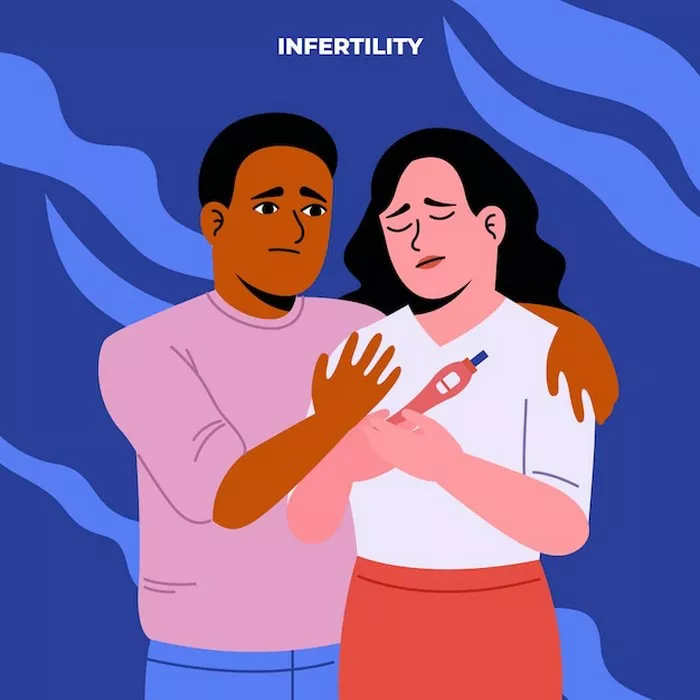Infertility is a complex issue that affects millions of individuals and couples worldwide. While primary infertility, the inability to conceive a child after at least one year of unprotected intercourse, is more commonly discussed, secondary infertility is a lesser-known but equally challenging condition. Secondary male infertility refers to the inability of a man who has previously fathered a child to impregnate his partner again. Understanding the nuances of secondary male infertility, including its causes, symptoms, diagnosis, and treatment options, is crucial for those experiencing challenges in conceiving after a successful pregnancy.
Causes of Secondary Male Infertility
Secondary male infertility can be caused by a variety of factors, ranging from lifestyle choices to underlying medical conditions. One of the primary contributors to secondary infertility in men is age-related changes in reproductive function. As men age, sperm quality and quantity can decline, making conception more difficult. Additionally, certain medical conditions, such as hormonal imbalances, sexually transmitted infections (STIs), and genetic disorders, can impact male fertility over time. Lifestyle factors, including smoking, excessive alcohol consumption, drug use, and obesity, may also play a role in decreasing fertility potential.
Symptoms of Secondary Male Infertility
Unlike primary infertility, which is often recognized when a couple is unable to conceive, the symptoms of secondary male infertility may be subtler. Men experiencing secondary infertility may not exhibit any obvious signs of fertility issues. However, changes in semen quality, such as decreased sperm count, reduced sperm motility, or abnormal sperm morphology, can indicate underlying fertility problems. Additionally, sexual dysfunction, such as erectile dysfunction or premature ejaculation, may contribute to difficulties in achieving pregnancy.
Diagnosing Secondary Male Infertility
Diagnosing secondary male infertility typically involves a comprehensive evaluation of both the man and his partner. Medical history, including any previous pregnancies, is reviewed, and physical examinations may be conducted to assess reproductive health. Semen analysis, a key diagnostic test, evaluates sperm quantity, quality, and motility. Additional tests, such as hormonal assays, genetic testing, and imaging studies, may be recommended to identify underlying causes of infertility. It’s important for both partners to undergo testing to determine if infertility issues are solely related to male factors or if female factors are also contributing to difficulties in conception.
Treatment Options for Secondary Male Infertility
The treatment approach for secondary male infertility depends on the underlying cause and the couple’s reproductive goals. In cases where lifestyle factors are contributing to infertility, adopting healthier habits, such as quitting smoking, moderating alcohol intake, and achieving a healthy weight, may improve fertility outcomes. Medical interventions, such as hormone therapy to correct imbalances or surgical procedures to address anatomical abnormalities, may be recommended to enhance fertility. Assisted reproductive technologies (ART), including intrauterine insemination (IUI) or in vitro fertilization (IVF), may be pursued if natural conception is not feasible. These techniques involve the manipulation of sperm and/or eggs to facilitate fertilization and implantation.
Statistics on Secondary Male Infertility
While comprehensive data on the prevalence of secondary male infertility is limited, studies suggest that it is not uncommon. According to the Centers for Disease Control and Prevention (CDC), approximately 9% of men in the United States experience infertility, with secondary infertility accounting for a significant portion of cases. Globally, secondary infertility rates may vary depending on factors such as socioeconomic status, access to healthcare, and cultural norms surrounding family planning. By shedding light on the prevalence of secondary male infertility, we can destigmatize the condition and encourage individuals to seek support and treatment.
Personal Perspectives on Secondary Male Infertility
Hearing personal stories from individuals or couples who have navigated the challenges of secondary male infertility can provide valuable insight and support for those facing similar struggles. For many, infertility can be emotionally and psychologically taxing, impacting self-esteem, relationships, and overall well-being. Sharing experiences, whether through online forums, support groups, or counseling sessions, can help individuals feel less alone and more empowered to seek assistance. By normalizing conversations about infertility and sharing personal narratives, we can foster a sense of community and understanding among those affected by secondary male infertility.
Support Resources for Coping with Secondary Male Infertility
Navigating the emotional rollercoaster of infertility can be overwhelming, but support resources are available to help individuals and couples cope with the challenges they face. Counseling services, both individual and couples therapy, can provide a safe space to explore feelings of grief, frustration, and anxiety related to infertility. Support groups, whether in-person or online, offer opportunities to connect with others who understand the unique struggles of infertility and provide mutual encouragement and empathy. Additionally, educational resources, such as books, websites, and podcasts, can offer valuable information and practical tips for managing infertility and exploring treatment options.
Conclusion
In conclusion, secondary male infertility presents unique challenges for individuals and couples seeking to expand their families. By understanding the causes, symptoms, diagnosis, and treatment options for secondary infertility, as well as accessing support resources and hearing personal stories from those who have experienced similar struggles, individuals can feel empowered to navigate their fertility journey with knowledge and resilience. Through open communication, compassionate support, and comprehensive care, we can work together to break the silence surrounding secondary male infertility and provide hope for those longing to conceive.
























